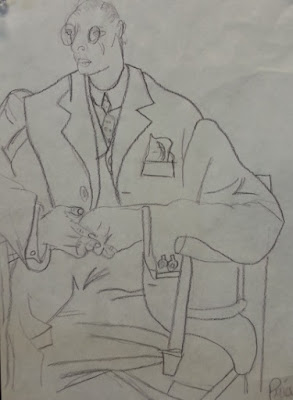Millions of people around the world have learned to draw using the methods outlined in Dr. Betty Edwards’s groundbreaking book Drawing on the Right Side of the Brain. Betty Edwards (born 1926 in San Francisco, California) is an American art teacher.
Edwards's method of drawing and teaching was revolutionary when she published it in 1979. It received an immediate positive response, and is now widely accepted by artists, teachers, and others around the world. Underlying the method is the notion that the brain has two ways of perceiving and processing reality – one verbal and analytic, the other visual and perceptual. Edwards' method advocates suppressing the former in favor of the latter. It focuses on disregarding preconceived notions of what the drawn object should look like, and on individually "seeing". Drawing, says Edwards, has five component skills of perception and drawing:
Edges and lines (includes copying drawings and contour drawing exercises)
Negative space (i.e. space between items)
Relationships (i.e. perspective and proportion between things)
Light and shadows (shading)
The whole: gestalt which emerges as the first four are taught
I bought the workbook as I was interested to see if I could use these methods to teach my students.
We did the following exercises and I was really surprised at how well they turned out!
This was Grades 7-9 students.
One exercise is a simple observational drawing of the hand holding an object.
First they used a black marker:
Then in pencil
Chair drawing
FOCUS: Understanding Relationships: Positive and Negative Spaces:
Try it! https://www.youtube.com/watch?v=ybS_GreHWm4&ab_channel=LeviJones
Exercise One: Drawing Upside Down
One of the exercises in Betty Edwards' wonderful book Drawing on the Right Side of the Brain is to copy a sketch of Picasso's "Portrait of Igor Stravinsky" but draw it upside down. The point of the exercise is to draw what we actually see and to discourage us from om focusing on recognizable shapes that our brain interprets from its stored concept of that shape.
Before you can draw accurately, you have to observe accurately.
One of Ms. Edwards’ teaching methods is to simply flip a picture upside down.
This creates a minor disruption in our left brain’s ability to insert assumptions, “OH THAT’S A FACE!" and we’re more apt to actually SEE the shapes in front of us. And tah dah! Students draw with more accuracy.
These were all drawn upside down!
Another upside down drawing exercise:
https://www.youtube.com/watch?v=8h8xttOtmPo&ab_channel=LeviJones
"Man Reading the Bible" by Van Gogh
















No comments:
Post a Comment